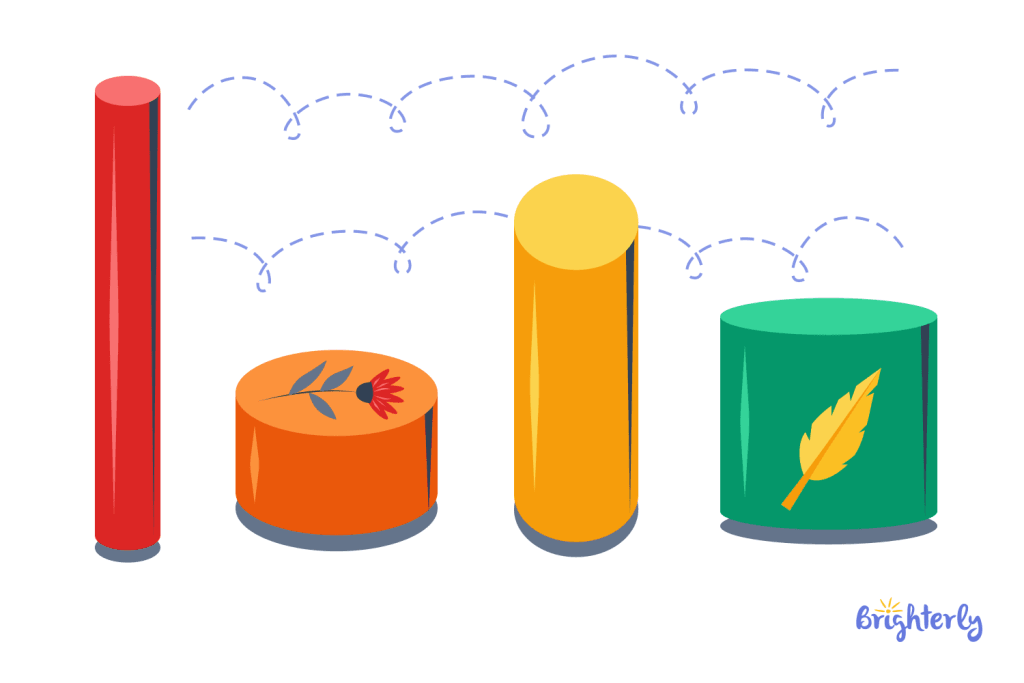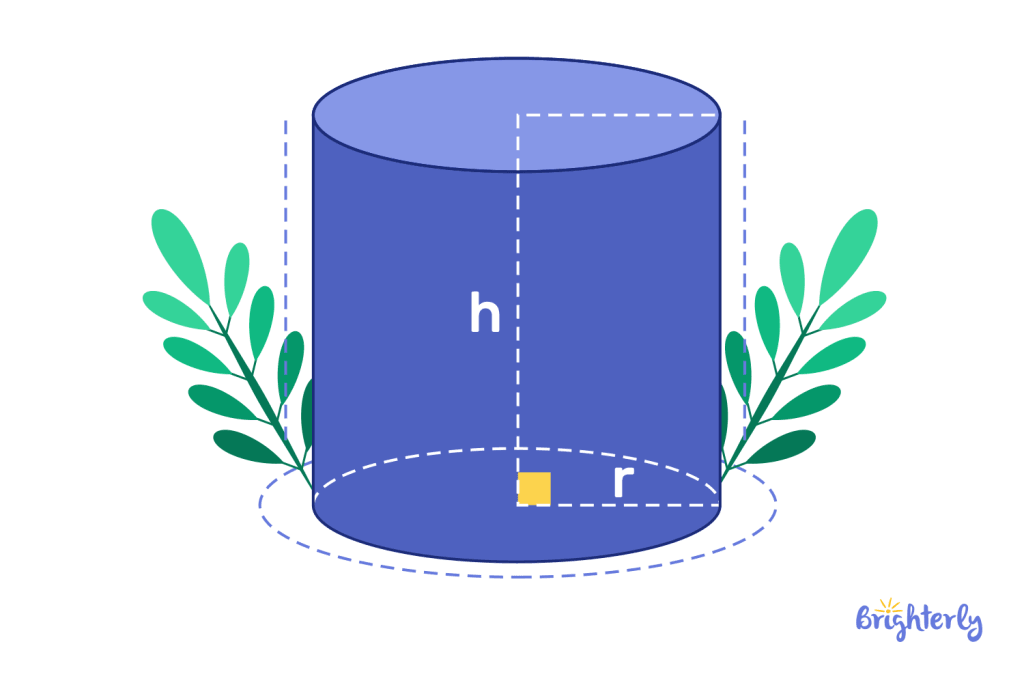Cylinder in Math: Definition and Examples
reviewed by Jo-ann Caballes
Updated on October 28, 2024
Welcome to Brighterly, where we make math interesting to learn and straightforward to understand.
Today we’re going to delve into geometry and the world of 3D shapes, focusing specifically on the shape of the cylinder.
You’ll encounter the cylinder a lot both in mathematics and in everyday life, so it is essential to understand and be able to work with this shape!
Here, we’ll cover what a cylinder is and what it looks like, cylinder real-life examples and the important cylinder formulas. We’ll also give you practice questions and fun, game-based worksheets so you can improve your knowledge!
What is a cylinder?
If you’re wondering, “Which shape is a cylinder?” we have the answer. A cylinder is a 3D (three-dimensional) shape with some unique cylinder attributes. It is one of the most basic shapes in geometry, but that doesn’t mean it is boring! We cover the full cylinder definition below.
Cylinder definition
The definition of a cylinder is a 3D shape that has two parallel circular bases. The two bases are connected by a curved surface that takes on the same circular shape. The height of the cylinder is defined as the distance between the two parallel circular faces. Those are the properties of a cylinder.
The axis in a cylinder is defined as the line segment that joins the two circular bases at their center.

What does a cylinder look like?
A cylinder can be said to look like an elongated circle but with two flat faces. We can also visualize a cylinder as a tube. Cylinders can come in many shapes and sizes, but they all have the characteristics of parallel circular faces that are the same size and shape, connected by a curved surface.

Cylinder in real life: examples
You will encounter cylinders in everyday life – cylindrical shapes are all around us! Here are just some cylinder examples that are around us in real life:
- Toilet roll tube
- A water bottle
- A mug for coffee
- A honey jar
- A tin of soup
- A soda can
- Pens and pencils
- Flashlights
- Batteries
- Fire extinguishers
Cylinder formulas
So, what is the equation for a cylinder? There are three key formulas that help you understand important elements about cylinders, also known as cylinder equations:
- Volume of a cylinder formula
- Lateral surface area of a cylinder formula
- Total surface area of a cylinder formula

Volume of a cylinder formula
The formula to work out the volume of a cylinder is:
π r² h
In this formula, r stands for radius, and h stands for height. The volume of a cylinder is expressed in cubic centimeters, which is often shortened to cm3.
Lateral surface area of a cylinder formula
The formula to work out the lateral surface area of a cylinder is:
2πr x h
Once again, r stands for radius, and h stands for height. The lateral surface area of a cylinder is expressed in centimeters squared, which is often shortened to cm2.
Total surface area of a cylinder formula
The formula to work out the lateral surface area of a cylinder is:
2πr (h + r)
R stands for radius, and h again stands for height. The total surface area of a cylinder is also expressed in centimeters squared or cm2.
Solved math tasks: examples
Ready to put your knowledge of the 3D cylinders shapes to the test? Try out our solved math tasks – first, work out your answers, then check our solved answers to see if you got them correct!
Solved math task 1
You have a cylinder with a radius of 5 cm and a height of 12 cm. What is the volume of this cylinder?
Answer:
| 942.48 cubic centimeters. |
Your sum here is volume = π x 52 x 12 = 942.4778 cubic centimeters.
Solved math task 2
You have a cylinder with a radius of 5 cm and a height of 12 cm. What is the lateral surface area of this cylinder?
Answer:
| 659.73 cm2. |
Your sum here is lateral surface area = 2π x 7 x 15 = 659.73 cm2.
Solved math task 3
You have a cylinder with a radius of 9 cm and a height of 15 cm. What is the total surface area of this cylinder?
Answer:
| 1357.1680263508 cm2. |
Your sum here is 2π9 (15 + 9) = 1357.1680263508 cm2.
Cylinder in math: practice math problems
Cylinder in math: worksheets
Ready to get stuck into working with cylinders and cylindrical shapes? Our fun, game-based math worksheets will help cement your new-found knowledge and help you master the shape of the cylinder!





